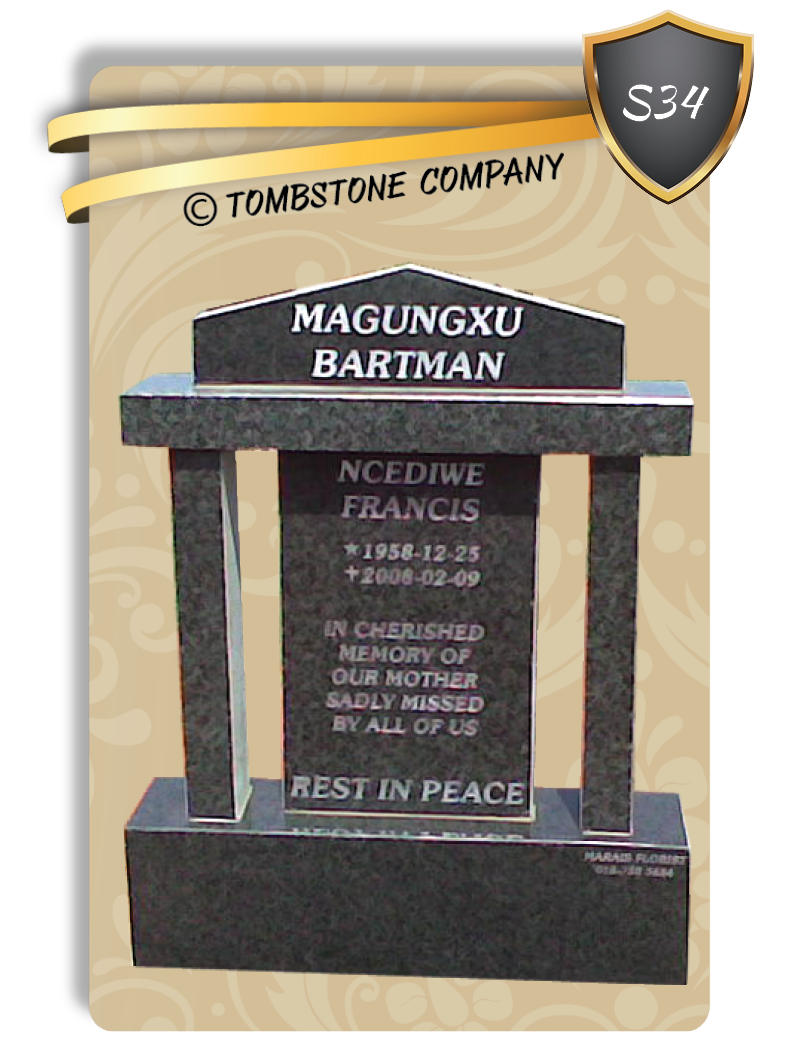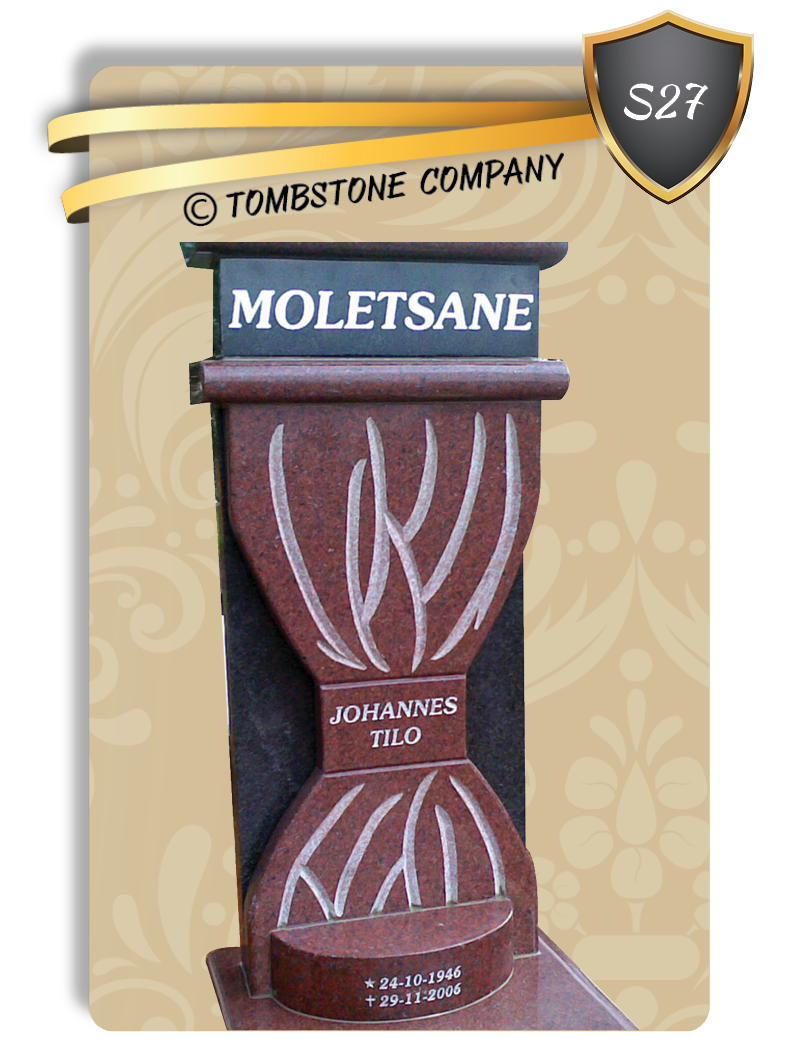
Welcome to the
Tombstone Company

Granite Tombstones in:
Westpark Cemetery, Avalon Cemetery, Carletonville Cemetery, Ennerdale Cemetery, Greenhills Cemetery, Kagiso Cemetery, Kromvlei Cemetery, Mohlakeng Cemetery, New Roodepoort Cemetery, Olifantsvlei Cemetery, Sterkfontein Cemetery, Toekomsrus Cemetery, Westonaria Cemetery and many more.
The Changing Face of Tombstone Images Over Time
Beautiful Tombstone images have changed considerably over time. The Sphinx, the Pyramids at Giza, the Tomb of I’timād-ud-Daulah at Agra, many of the Maya structures spread across the Yucatan and Central America, and the Tomb of the Unknown Soldier at Arlington are just of few examples of the extent some people go to preserve the memory of their loved ones for all time.
Tombstone images or pictures are much more ancient than people realize and very beautiful. Recent discoveries in Europe and Russia have shown that the Neanderthal marked the tombs of their departed with symbols that include a blue symbol that resembles the hashtag used in social media today.
Naturally, tombstone images or pictures depending on the religion of the departed, the sect of that religion, the area of the world that supplied the materials for the tombstone, and the skill of the people that constructed the tombstone. The tombstone is also representative of the position in society and the wealth of the family of the person interred.
Every culture in the world has seen a progression over time of changes in the depiction of beautiful images or pictures on a person’s tombstone. Christianity is a marvellous example of how tombstones have changed over time to reflect changing perceptions of the believer’s view of the God and the afterlife.


Additional Features
The first Christians tombstones did not exist. The stone boxes the earliest Christians were buried in were very often completely bare or had a simple inscription of the deceased name. As the Roman Empire became Christianized the tombstones of common people and the elite took on more the flavour of the ornate carvings associated with Egyptian and pagan Roman imagery.
With the advent of Protestantism, tombstone images took two different paths. A Catholic tombstone was much more ornate and decorative than a Protestant tombstone. Protestant and Catholic tombstones would be considered macabre and grotesque by modern standards with the frequent depiction of death’s heads, demons, and imagery that depicted the tortures of the dammed in the infernal regions.


Personality and Final Message
Modern tombstones, while often elaborate and artistically stunning, just cannot compare with the beautiful tombstones of the past. This does not indicate a loss of respect for the deceased or a lack of fear of death on the part of modern people. The simple cost of a handmade tombstone is frequently beyond the financial capacity of most people.
The stonework itself has become a dying art as machinery has replaced the skilled carvers of a lost age. One might wonder why cemeteries are such a draw for tourists in any location. Part of the fascination with tombstones and Tombstone images is a desire to be remembered and a need to remember the departed.
Another facet of the preoccupation that almost all cultures on the Earth have with beautiful tombstones is the desire to reach past the veil of death to someone that we loved or someone that inspired us even if they lived hundreds of years ago. Pictures of tombstones images are a wonderful way to record family history, examine the history of any part of the past, and a real education in the skill and mastery of many arts that went into creating a tombstone.
Once one gets past the obvious death factor, the variety of art forms used to decorate the tombstones of people across the world is a fascinating study of culture, belief, and art. A man may have never expressed himself so beautifully or as sublimely as he has in his depiction of the images that decorate the last remains of his dead.
From the delicate bundling of a young Inca girl in the Andes to the tiles in Westminster Abbey that maintain the memory of the world’s greatest writers and leaders, man has always celebrated the life of a person with imagery and always will.

© Copyright Tombstone Company
Terms of service | Privacy Policy | Disclaimer
